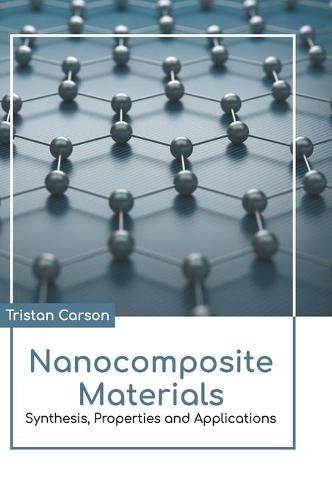Readings Newsletter
Become a Readings Member to make your shopping experience even easier.
Sign in or sign up for free!
You’re not far away from qualifying for FREE standard shipping within Australia
You’ve qualified for FREE standard shipping within Australia
The cart is loading…






The multiphase solid material which has one, two or three dimensions of less than 100 nanometers are known as nanocomposites. It also includes structures that have nano-scale repeat distances between the various phases that form the material. The underlying goal of this field is to make materials that are more flexible and have improved mechanical, electrical, optical, catalytic, thermal, electrochemical and physical properties as compared to the component materials. It includes the study of colloids, porous media, gels and copolymers. These materials have high surface to volume ratio of the reinforcing phase. They can be divided into four types. Some common types of composite materials are metal-matrix nanocomposites, magnetic nanocomposites, ceramic-matrix nanocomposites and polymer-matrix nanocomposites. The topics covered in this extensive book deal with the core aspects of nanocomposite materials. It studies, analyzes and upholds the pillars of nanocomposite materials and its utmost significance in modern times. For someone with an interest and eye for detail, this book covers the most significant topics related to this field.
$9.00 standard shipping within Australia
FREE standard shipping within Australia for orders over $100.00
Express & International shipping calculated at checkout
The multiphase solid material which has one, two or three dimensions of less than 100 nanometers are known as nanocomposites. It also includes structures that have nano-scale repeat distances between the various phases that form the material. The underlying goal of this field is to make materials that are more flexible and have improved mechanical, electrical, optical, catalytic, thermal, electrochemical and physical properties as compared to the component materials. It includes the study of colloids, porous media, gels and copolymers. These materials have high surface to volume ratio of the reinforcing phase. They can be divided into four types. Some common types of composite materials are metal-matrix nanocomposites, magnetic nanocomposites, ceramic-matrix nanocomposites and polymer-matrix nanocomposites. The topics covered in this extensive book deal with the core aspects of nanocomposite materials. It studies, analyzes and upholds the pillars of nanocomposite materials and its utmost significance in modern times. For someone with an interest and eye for detail, this book covers the most significant topics related to this field.